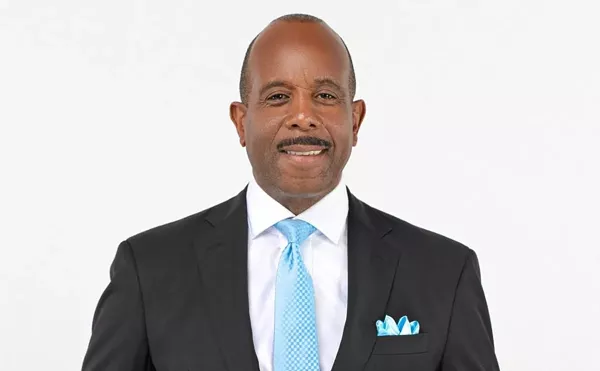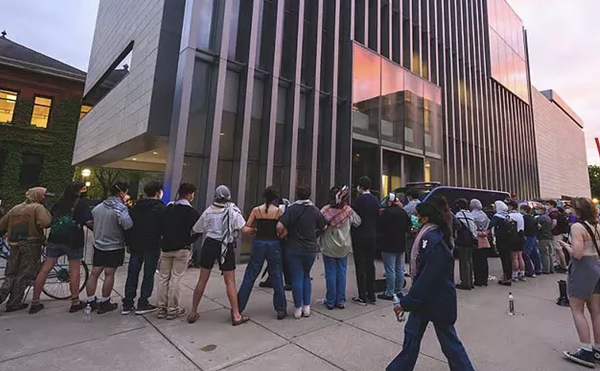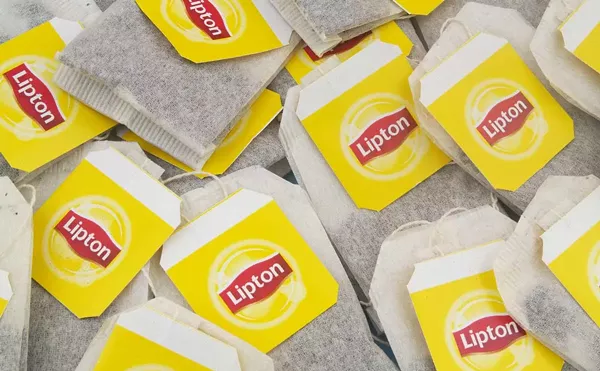
Audio By Carbonatix
[
{
"name": "GPT - Leaderboard - Inline - Content",
"component": "35519556",
"insertPoint": "5th",
"startingPoint": "3",
"requiredCountToDisplay": "3",
"maxInsertions": 100,
"adList": [
{
"adPreset": "LeaderboardInline"
}
]
}
]
Payday
Fantasy Films
If you know Rip Torn at all, it's probably from his genius turn as the profound, profane, blustering producer Artie on the unequaled Larry Sanders Show. And while that sacred bit of TV genius is still pretty much part of the pop culture vernacular (though the HBO show left the air in '98), old Torn — vet of stage and screen — is hardly a household name.
All the more reason to Netflix the shit out of this 1973 forgotten gem of a film, a rough-hewn love letter to the simple, beatific horrors of a country singer on the Southern roadhouse haul, a man who's as addicted to drugs, booze, guns and poontang as he is to his music. It's Waylon, Merle, Cash and George Jones in their heyday, when the good times and personal devastation they sang about paled in comparison to the unsung realities of their actual lifestyles.
Torn is Maury Dann (his name being the only flaw in the film; sounds like a Jewish writer for the Steve Allen Show), a mid-level artist clawing his way (literally) toward Nashville in the back of a white Caddy limo along with his girlfriend and a dime-store counter hottie he seduces along the way.
Filmed in the neorealistic, sweat-and-greeze '70s style of better known epics like Easy Rider or Burt Reynolds' sticky, badass White Lightning (also a '73 release), Payday allows Torn to be a snarling prick, a self-centered rage-aholic beyond redemption who disregards his ex-wife, children, girlfriends, managers, a limo driver, redneck cops, small town dee-jays, his audience and, ultimately, his talent, in the name of his own hell-bent path. After watching this thing, Artie is a breath of fresh air. —Peter Gilstrap
Pleasure Factory
Strand
With Pleasure Factory, along with The Wayward Cloud and the forthcoming Help Me Eros, Strand is becoming the leading distributor of porny antiporn from Asia. In Pleasure Factory, Thai director Ekachi Uekrongtham's laconic exploration of Geylang, Singapore's red-light district, the seedy thrill of legalized prostitution shares the screen with the melancholic aftertaste of lust, the perpetual danger of sexual abuse, the tender study of a virgin's deflowering and repressed homoerotic longing. Ekachai achieves all of this with few words, cutting between stories of a first-time brothel visitor, his closeted-gay best friend, a red-dressed hooker and her affluent john, a voyeuristic American tourist and a weathered prostitute and her daughter. These parallel plots all play out on a continuous strip of cinematographic sin that recalls the New York of Taxi Driver. The director adds a couple of documentary-like character interviews, which are among the most enjoyable moments in the film; it's a direction he should have pursued further. As successful as Pleasure Factory is at turning sexual fantasy into bitter reality, it's not as moving or illuminating as Kenji Mizoguchi's Street of Shame or Hou Hsiao-Hsien's Flowers of Shanghai. —John Thomason
Mannix: The First Season
CBS DVD
Among the plethora of vintage TV cop shows getting reissued (the great Cannon, the still-worthy Mission: Impossible and the sadly barely watchable Hawaii Five-O) comes Mannix, the only detective series ever to feature an Armenian-American dick. The long-running show — from '67 through '75 on CBS — starred Mike Connors (don't be fooled by the WASPy last name; our hero started life in Fresno, Calif., as Krikor Ohanian), the suave, nattily-dressed Joe Mannix, a loner rebel P.I. working for the high-brow Intertect detective agency.
And Mannix is one tough cookie. Through the 24 episodes in this high-octane, six-disc gem of a collection, the Korean War vet takes as many blows as he gives, getting beaten, shot and knocked out, yet his perfectly-sculpted coif holds like it's been flea-dipped in Aqua Net.
The debut show is a sweet example of the man's man that is Mannix. Filmed on location in Palm Springs, the justice-at-all-costs-minded sleuth does some serious driving (for motor heads, the pageantry of bitchin' rides is breathtaking. Joe's personal machine is a custom convertible '68 Oldsmobile Toronado), engages mano a mano with an evil goon in a mud pit, and goes Olds vs. helicopter in a searing desert action scene. Balls-out Connors did nearly all his own stunts; he also received four Golden Globe and four Emmy nominations during the series' run.
Mannix is dated only by wardrobe, cars and the gargantuan computer Intertect uses — but it's a delicious kind of dated. Unlike other period crime fare, the series is still crisp, cool and completely entertaining. And, for trivia heads (and esteem-seeking Armenians), during the opening credits a graphic layout depicting the Armenian flag appears. So it's subversive. Grab some baklava and dig in. —Peter Gilstrap
High & Low
Criterion
Far above the sprawling urban squalor looms the palatial home of Kingo Gondo (Toshiro Mifune), an executive in National Shoes. Working his way up from nothing, Gondo prides himself on being a self-made man and providing a good home to his family.
There's a company coup afoot that sees a handful of corporate execs rallying to replace the founder of National Shoes. They hope to get Gondo to align with them, but he's got his own plan. It all hinges on a single business deal for which he's leveraged everything he owns. It's that day that the cold hand of fate reaches out from the lower depths to show Gondo just how tenuous his masterful grip on life truly is.
Gondo's son is kidnapped ... or so he initially thinks. It's quickly revealed that his son's safe but the life of his chauffer's boy hangs in the balance; testing Gondo's scruples and jeopardizing all that's fundamental to him.
Based on King's Ransom by Evan Hunter (writing as Ed McBain), Kurosawa's High & Low stays highly faithful to its pulpy origins with its derivations only providing a stronger narrative. The first half resembles a beautifully blocked play with nearly all the action taking place in "The High" of Gondo's house. The rest of the film works as a stark comparison.
"The Low" contains long stretches without dialogue, relying almost solely on the ambient din of the city for soundtrack. As chaotic as the first half was ordered, this section is a police procedural in which the kidnapping is slowly unraveled. Unlike Hunter's source book, High & Low doesn't interleave the story of Gondo and the kidnappers. For more than an hour, the kidnappers remain a disembodied voice on the phone which heightens the tension and makes them more menacing.
This shift in tone and style may suggest schizophrenia but the contrast is key to highlighting the disparity between the worlds of High & Low. Along with The Bad Sleep Well, Akira Kurosawa provided two stunning films of corporate intrigue and crime with a definite film noir flavor.





